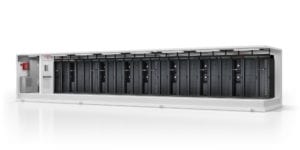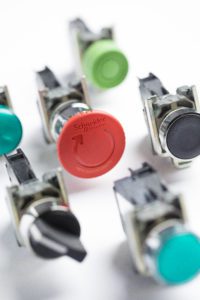Did you ever have trouble when choosing from restaurant menu, should I have the sumptuous meat or rather the so-nicely flavored fish? When looking at your typical pushbutton catalog, we are often faced with a similar dilemma: do you want to go to the metal pushbutton section or rather to the plastic pushbutton part?
During customer visits, I often found that the initial move is just to go for the selection you’ve been going with in the recent or not so recent past. But when we begin digging deeper, we discover that the choice is usually very much related to personal tastes and the applicative needs for the product, to the point that you can feel the passion for their machine behind most engineer reasons.
To simplify, I’ve found that 3 factors are usually guiding this choice:
- The aesthetics
- The resistance to mechanical constraints
- The resistance to chemical environments.
The aesthetics of pushbuttons is usually a compromise between 2 criteria. Metal pushbuttons are usually giving a higher impression of robustness, from the weight you feel when taking them in your hand to the hardened look and feel they provide once installed, and that perceived robustness is screaming that your machine is ready for its life in a harsh environment. On the other hand, the color of the pushbuttons is key for the aesthetic homogeneity in the control interface. The usual matt black color of plastic pushbuttons is therefore driving engineer’s choice when they are looking for a nice contrast with a standard grey enclosure background or on the contrary when they want to lose the pushbutton in a dark background. For those who hesitate, black painted metal pushbuttons are always an alternative…
The resistance to mechanical constraints is usually in favor of the metal pushbuttons: their fixation is usually stronger against vibration and you just need a more violent shock to hurt a metal part than its equivalent plastic part. Interestingly, metal pushbuttons are also stronger against most temperature attacks. In particular, for Steel production line where hot drops of metal can fly in the air, the metal pushbuttons are less prone to melting and therefore resist better in the long run.
The chemical resistance on the other hand is usually more difficult a choice. Indeed, plastic and metal both have their strong points. The following table is an easy guide to the chemical resistance of both categories:
In case of doubt, the easier is still to leave a sample of each pushbutton in your environment for one month and see the results.
Are you making your decision based on the same factors or do you choose your pushbutton material based on other criteria?
Click here to discover more about our Harmony range of pushbuttons?



